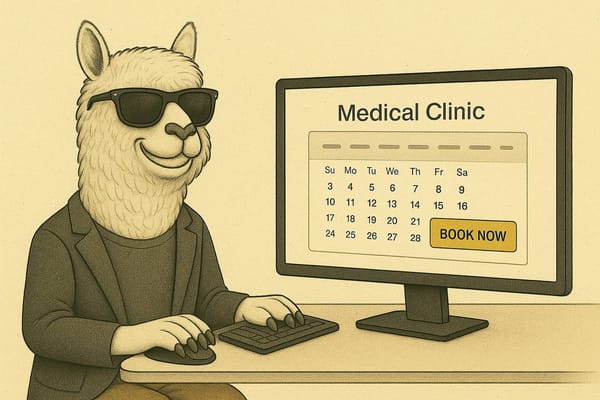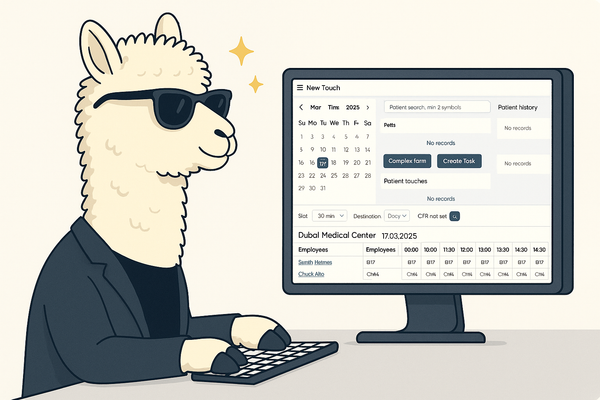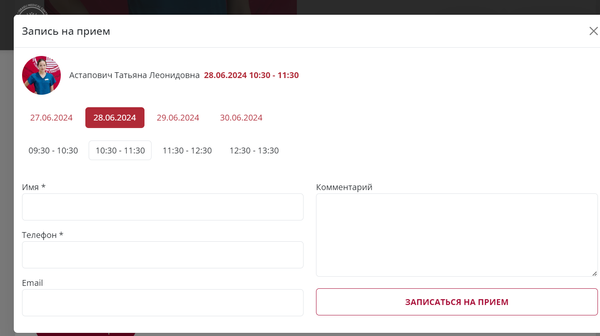Tel-Aviv Medical Center Case study (Part II - All-in-one)
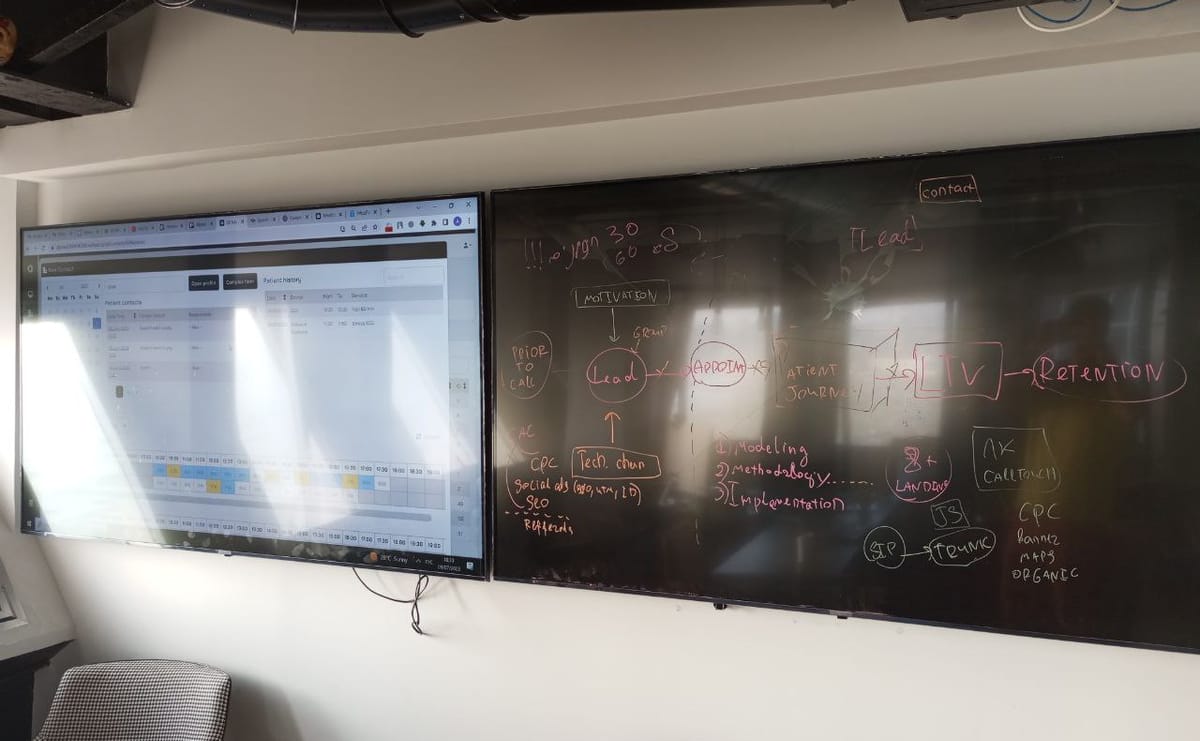
Once I stood with a booth on a healthcare event, and CIO of a large kupat holim (hospital and insurance group) approached me, and asked - What could your system give us? I replied - well, you will use one system instead of 30. He said - so what? And at this point I was really stunned - I mean, how could you need to explain such a basic thing?
Well, allow me to retort (c). I'm an Android user, but when iPhone went out - it was a real revolution. You now could use 1 device instead of phone, camera, palm, iPod etc. It was a real breakthrough, and it changed the world. But the enterprise software didn't get this idea, and is still a real mess and patchwork quilt.
Let's describe how TAMC before they met lovely alpacas, on the example of girl in call-center (in hospitals it's WAY worse):
- Pick up the phone in Bitrix
- Recall what doctor does what service and at what price (and check it in Excel table)
- Make an appointment in Google Calendar
- Get back to Bitrix and write down the info about the lead
- If patients asks to send him his medical protocols - go to a specific folder, find Word file, copy e-mail, go to Gmail, send the protocol
Not only it requires to navigate through multiple windows, it also implies that this very girl remembers all the doctors, services and prices (sic!). That means that you have to make an onboarding for like a month before you get the fully functional unit. And yes, you probably should hire staff smarter than you=) Literally, I can't remember all this information. Which leads to another problem - it's hard to find such an advanced person, who would agree to work in a call-center.
We do not believe in people. That's one of the basic concepts of our software - all errors that could be made will be made. Over and over again. So we are trying to pipeline all the processes as much as possible, so user would go through a highly determined flow.
The less user thinks while using the software than better. Call center shouldn't think about how to make an appointment correctly, they should provide best service, smile via phone, and work on conversion rate.
So, how it works now? Let's see:
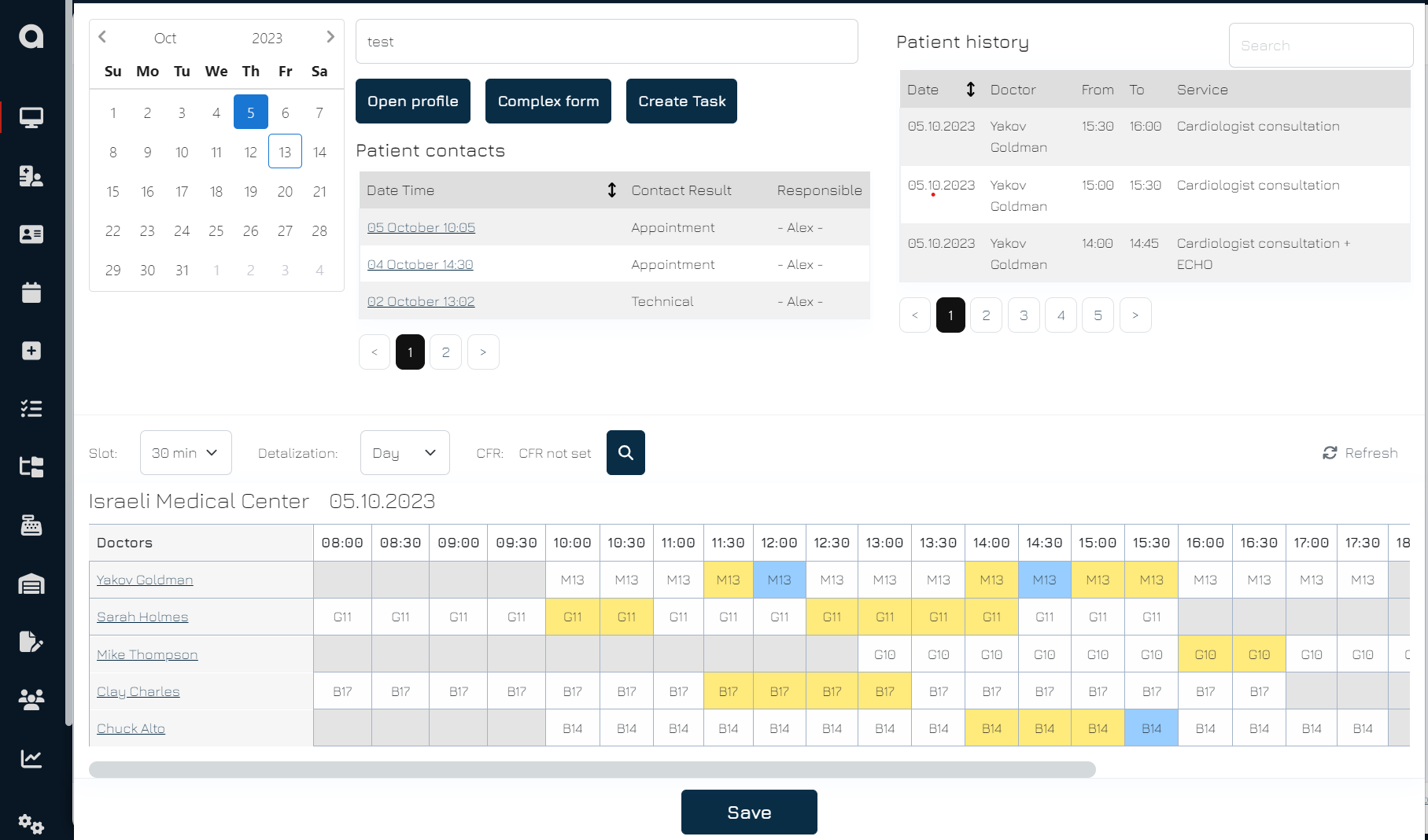
- User gets the call, lead card, patient's history and schedule in one window
- Make, reschedule, cancel an appointment, send exam or offer? All from one window. And surely you can send protocols and lab test result from the same window without seeing their contents (security joins the chat) only to confirmed e-mail or phone number
- All services are linked to doctors, individual prices for each doctor, price type and service, rooms, all information about the doctor or service is displayed. You just can't make wrong appointment.
- WhatsApp, lead forms from website? Again, one window
- Online booking? I mean the real one, when you see actual slots on a website and make appointment right to the schedule - you got it
Alpacas prevail. Onboarding was actually reduced to 2-3 days. And yes, you can now hire personnel, that is not aware of General Relativity Theory. You can also handle a call about 2 times faster now.
And it gets even better for management. Previously, they had to get analytics from different systems (leads from Bitrix, financials from iCount, marketing analytics from web, etc.), and now they have it one system, from lead to payments and medical information.
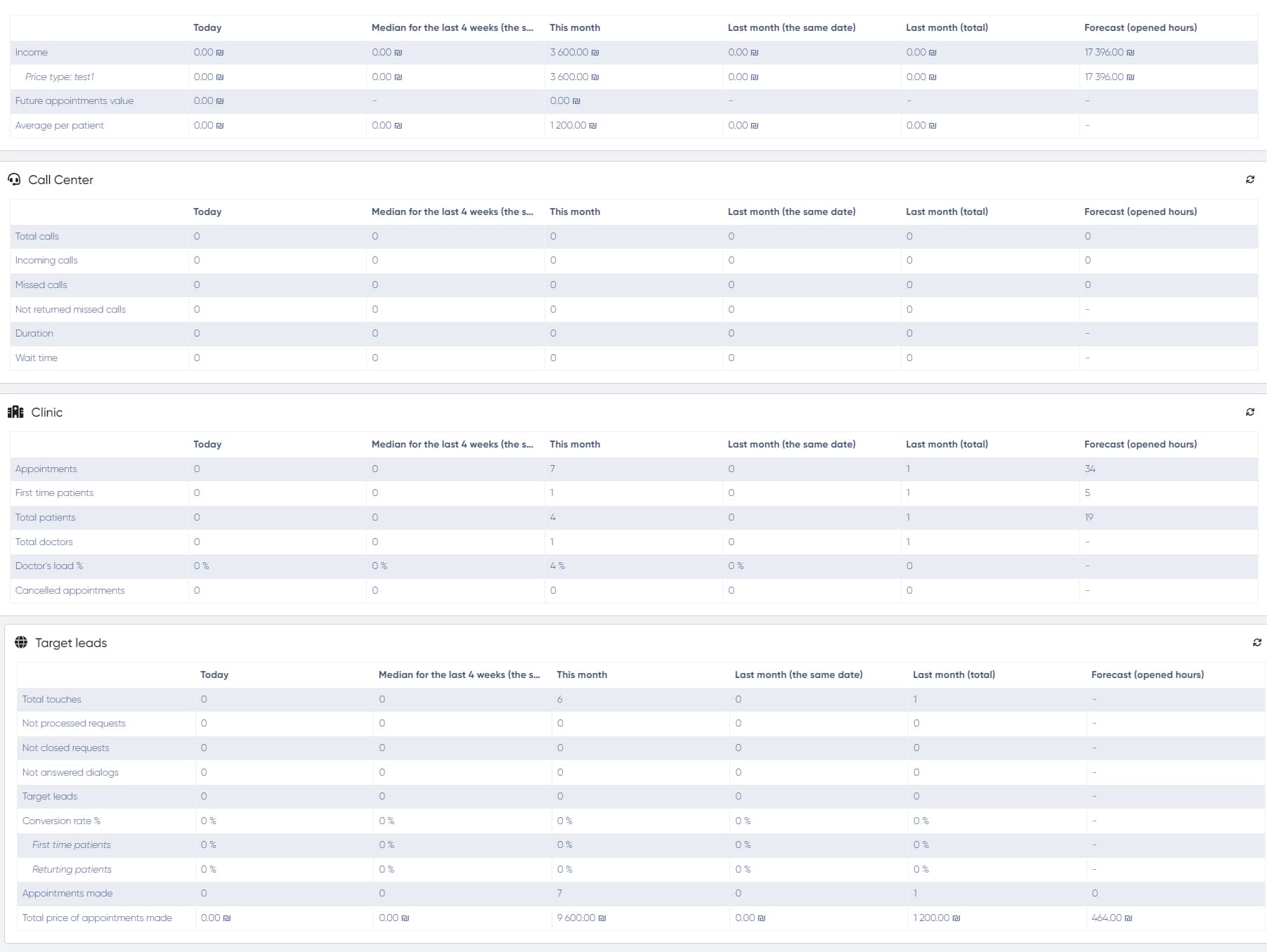
We call the dashboard above a meditational analytics - one you update every 10 minutes during the day (well, technically it updates every 30 seconds automatically). We also have wages, calls statistics, referrals, agents, all in one. Why struggle with 6 systems, when you can struggle only with one? It helps to greatly reduce your costs. At least for drugs for depression treatment.
And one system has one more not so obvious advantage - cyber security. If you have dozen systems, it requires you to have lots of integrations, open ports, unsecure APIs, access level nightmare. And if you use only one, it's way easier to secure it.
Well, I hope you got some picture of all-in-one advantages. In the next part we will move to the thing, that still is almost non present on the market - full & real end-2-end marketing analytics. If you run ads, and is concerned about their efficiency, you will definitely give us a call after reading the third part=)

